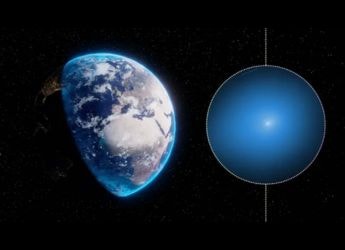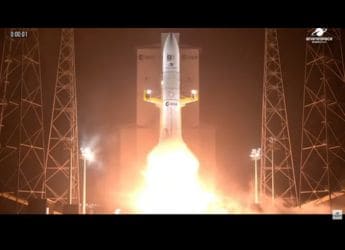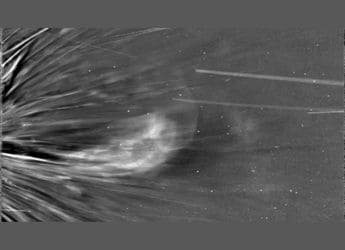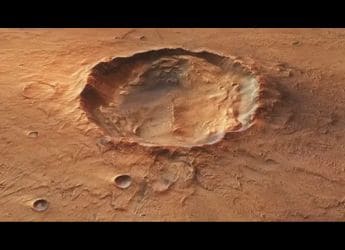- Home
- Science
- Science News
- New Crew Arrives at ISS After 2 Month Delay
New Crew Arrives at ISS After 2-Month Delay
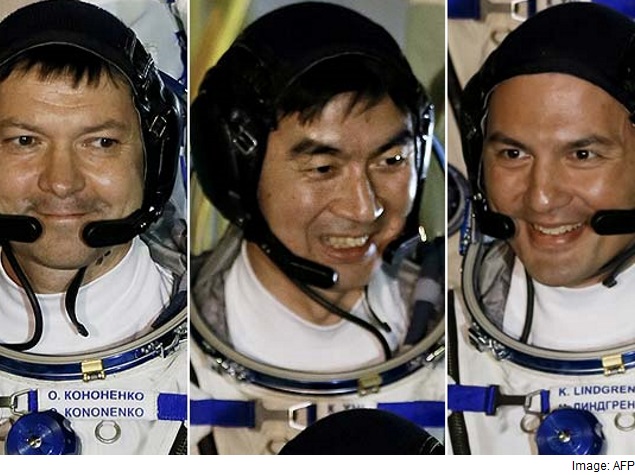
Veteran Russian cosmonaut Oleg Kononenko and rookie astronauts Kjell Lindgren with Nasa and Japan's Kimiya Yui blasted off aboard a Russian Soyuz rocket at 5:02 p.m. (2:30 a.m IST) from the Baikonur cosmodrome in Kazakhstan.
They arrived less than six hours later to begin a five-month mission aboard the station, a $100-billion laboratory that flies about 250 miles (400 km) above Earth.
The trio had been set to fly in May, but Russia delayed the mission after a botched launch of a similar Soyuz rocket on April 28. That accident stranded a Progress cargo ship in an orbit too low to reach the station.
Nine days later, the capsule, loaded with three tons of equipment and supplies, fell back into Earth's atmosphere and was incinerated.
Accident investigators determined that the Progress failed to separate properly from the Soyuz rocket's third-stage engine. The Soyuz returned to flight on July 3, successfully launching a replacement load of cargo to the station.
"We're confident in the rocket ... we're all very excited to launch," Lindgren, 42, told a pre-launch news conference.
Two U.S. companies that fly cargo to the station under contract with the U.S. space agency also lost capsules after recent failed launches. Privately owned SpaceX and Orbital ATK remain grounded following accidents last month and in October 2014, respectively.
A fourth station resupply line is operated by Japan, which is scheduled to fly again in August."It's certainly no fun to see several of the cargo vehicles undergo mishaps," Lindgren said. "It underscores the difficulty of this industry and ... how unforgiving the space environment is."
The arrival of Lindgren, Kononenko, 51, and Yui, 45, returns the space station to a full six-member crew for the first time in six weeks.
"We look forward to seeing them," U.S. station flight engineer Scott Kelly said during an inflight interview on Tuesday.
Kelly and Russia's Mikhail Kornienko are participating in the station's first year-long mission. Also aboard is veteran cosmonaut Gennady Padalka, the current station commander.
The Soyuz capsule arrived on Wednesday with just one pair of its power-producing solar arrays deployed. Nasa mission commentator Kyle Herring said the glitch had no impact on the capsule's flight and docking.
© Thomson Reuters 2015
Get your daily dose of tech news, reviews, and insights, in under 80 characters on Gadgets 360 Turbo. Connect with fellow tech lovers on our Forum. Follow us on X, Facebook, WhatsApp, Threads and Google News for instant updates. Catch all the action on our YouTube channel.
Related Stories
- Samsung Galaxy Unpacked 2025
- ChatGPT
- Redmi Note 14 Pro+
- iPhone 16
- Apple Vision Pro
- Oneplus 12
- OnePlus Nord CE 3 Lite 5G
- iPhone 13
- Xiaomi 14 Pro
- Oppo Find N3
- Tecno Spark Go (2023)
- Realme V30
- Best Phones Under 25000
- Samsung Galaxy S24 Series
- Cryptocurrency
- iQoo 12
- Samsung Galaxy S24 Ultra
- Giottus
- Samsung Galaxy Z Flip 5
- Apple 'Scary Fast'
- Housefull 5
- GoPro Hero 12 Black Review
- Invincible Season 2
- JioGlass
- HD Ready TV
- Laptop Under 50000
- Smartwatch Under 10000
- Latest Mobile Phones
- Compare Phones
- OnePlus 15R
- Realme Narzo 90x 5G
- Realme Narzo 90 5G
- Vivo S50 Pro Mini
- Vivo S50
- OPPO Reno 15c
- Redmi Note 15 5G
- Redmi Note 15 Pro 5G
- Asus ProArt P16
- MacBook Pro 14-inch (M5, 2025)
- OnePlus Pad Go 2
- Poco Pad M1
- Just Corseca Skywatch Pro
- Honor Watch X5
- Acerpure Nitro Z Series 100-inch QLED TV
- Samsung 43 Inch LED Ultra HD (4K) Smart TV (UA43UE81AFULXL)
- Asus ROG Ally
- Nintendo Switch Lite
- Haier 1.6 Ton 5 Star Inverter Split AC (HSU19G-MZAID5BN-INV)
- Haier 1.6 Ton 5 Star Inverter Split AC (HSU19G-MZAIM5BN-INV)














